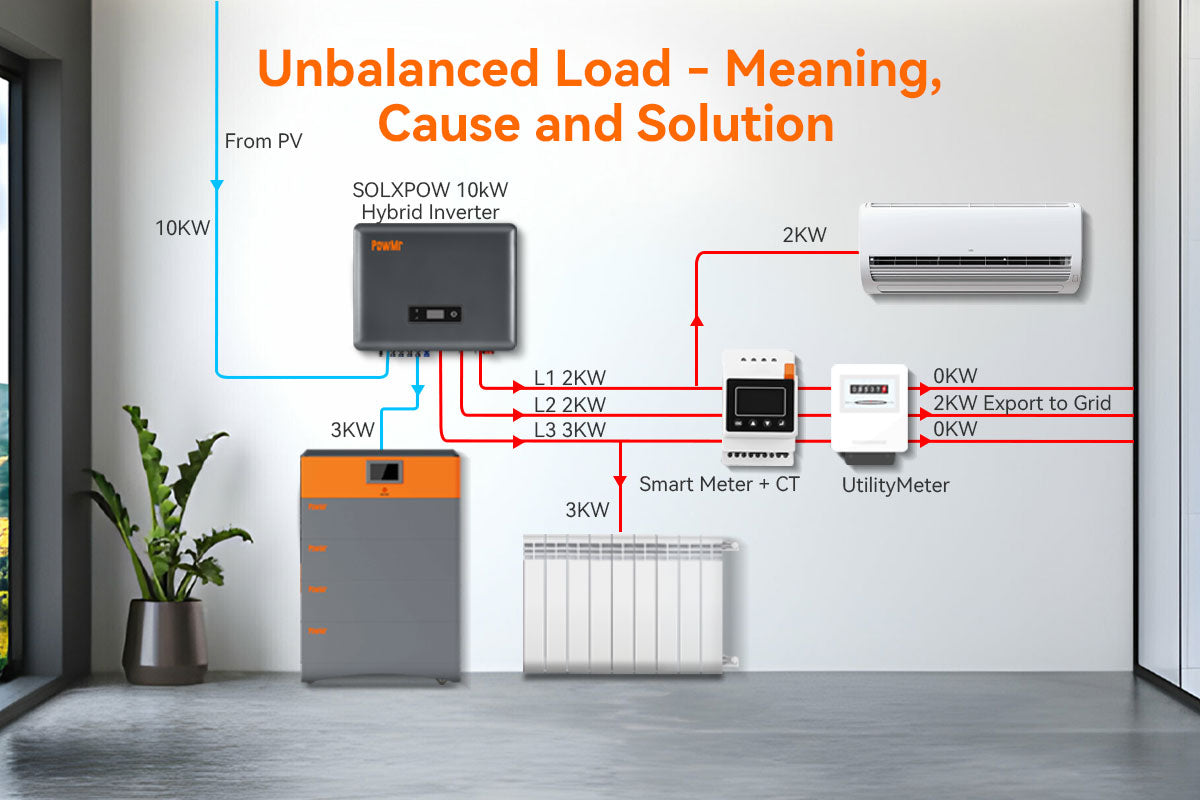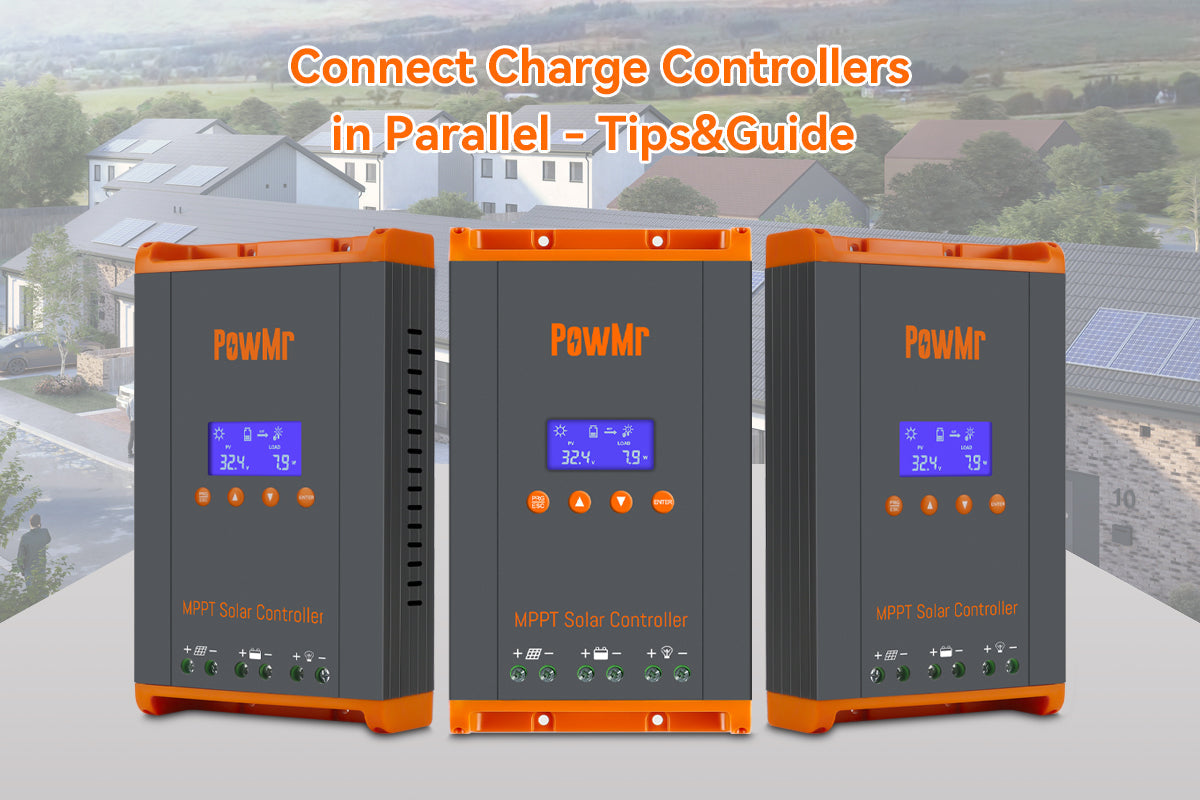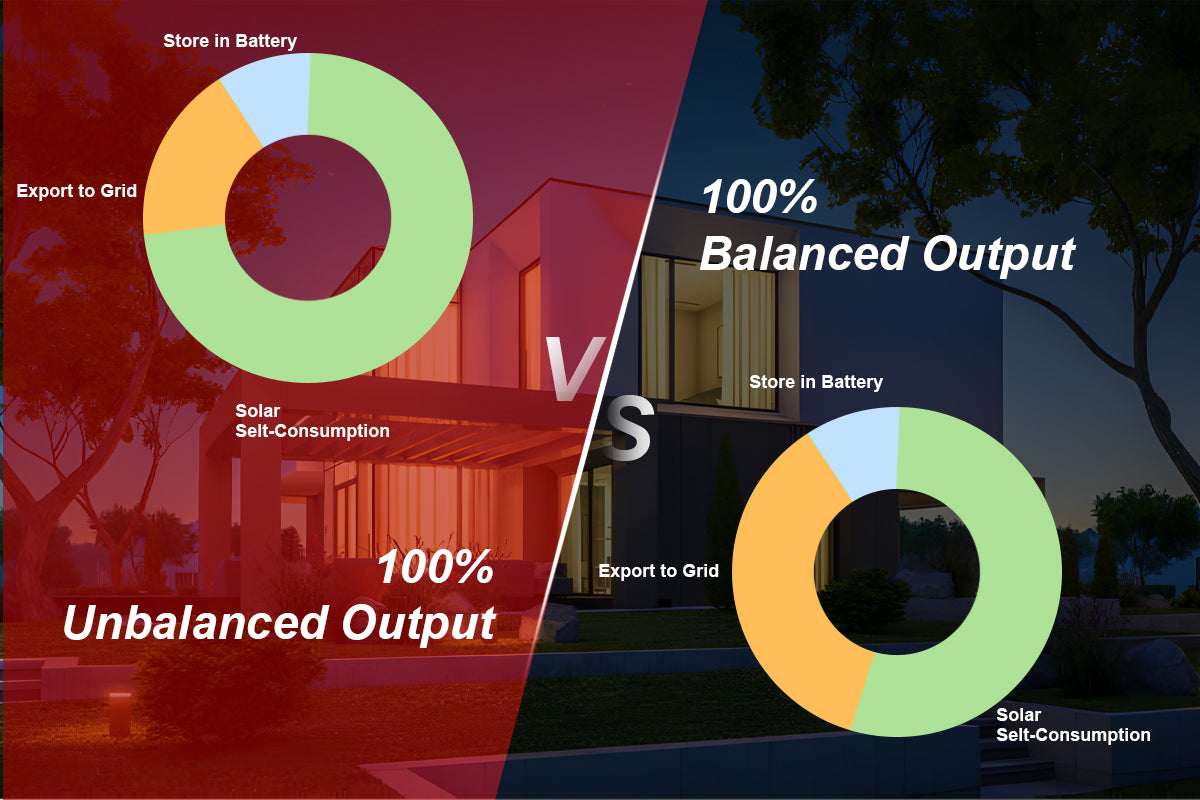แหล่งพลังงานหลักสำหรับโรงงานอุตสาหกรรมส่วนใหญ่ รวมถึงร้านค้าและโรงรถขนาดเล็กจำนวนมาก คือระบบไฟฟ้าสามเฟสที่มีอยู่ทั่วไป ระบบไฟฟ้าสามเฟสทำหน้าที่เป็นโครงสร้างพื้นฐานที่สำคัญสำหรับโครงสร้างพื้นฐานทางไฟฟ้าสมัยใหม่ โดยเสนอวิธีการที่มีความทนทานและมีประสิทธิภาพในการกระจายพลังงานไฟฟ้า เพื่อให้มั่นใจในความปลอดภัยและประสิทธิภาพ จึงเป็นสิ่งสำคัญที่จะต้องวางแผนการติดตั้งระบบไฟฟ้าสามเฟสอย่างรอบคอบ
ในบทความนี้ เราจะชี้แจงความหมายของ โหลดที่ไม่สมดุล ในระบบสามเฟสและเจาะลึกถึง สาเหตุที่อาจเกิดขึ้น นอกจากนี้เราจะรวมการอภิปรายกับระบบพลังงานแสงอาทิตย์สามเฟส โดยอธิบาย วิธีบรรเทา ความไม่สมดุลดังกล่าว นอกจากนี้เราจะนำเสนอ ฟังก์ชันการส่งออกที่ไม่สมดุลในระบบพลังงานแสงอาทิตย์ เพื่อเพิ่มความเสถียรและประสิทธิภาพโดยรวมของระบบ.
โพสต์ที่เกี่ยวข้อง:
อินเวอร์เตอร์สมดุล vs อินเวอร์เตอร์เอาต์พุตไม่สมดุลสำหรับพลังงานแสงอาทิตย์
ความหมายและสาเหตุของการโหลดที่ไม่สมดุล
การโหลดที่ไม่สมดุลเป็นปรากฏการณ์ที่เกิดขึ้นเมื่อ กระแสไฟฟ้าหรือแรงดันไฟฟ้า ในแต่ละเฟสภายในระบบพลังงานสามเฟสมีค่า ไม่เท่ากัน.
ในระบบสามเฟสที่สมดุลอย่างสมบูรณ์ โหลดในแต่ละเฟสจะมีขนาดและปัจจัยกำลังที่เหมือนกัน อย่างไรก็ตาม ในสถานการณ์จริง โหลดที่เชื่อมต่อกับแต่ละเฟสอาจมีความต้องการพลังงานที่แตกต่างกัน
ความไม่สมดุลนี้อาจเกิดขึ้นเมื่ออุปกรณ์บางชนิดต้องการพลังงานสามเฟส ในขณะที่อุปกรณ์อื่นทำงานอย่างอิสระโดยใช้พลังงานเฟสเดียว นอกจากนี้ การกระจายพลังงานที่ไม่เท่ากันระหว่างเฟสอาจเกิดจากความแตกต่างในการใช้พลังงานรวมของอุปกรณ์ในแต่ละเฟส.
นอกจากการกระจายการใช้พลังงานที่ไม่สม่ำเสมอในอุปกรณ์ไฟฟ้าแล้ว ยังเป็นไปได้ที่ส่วนประกอบของระบบพลังงานจะมีส่วนทำให้เกิดภาระที่ไม่สมดุล เช่น:
-
อิมพีแดนซ์ไม่เท่ากัน
ความแปรผันในอิมพีแดนซ์ของส่วนประกอบซึ่งอาจเกิดจากความแตกต่างใน ความยาวของสายเคเบิล, ขนาดของสายไฟ หรือความแปรผันใน ความต้านทานของหม้อแปลง. -
ข้อบกพร่องในระบบ
ข้อผิดพลาดเกิดขึ้นเมื่อหนึ่งในเฟส ในระบบสามเฟสหายไป ซึ่งอาจเกิดจากฟิวส์ขาด เบรกเกอร์ที่มีปัญหา หรือสายไฟที่เสียหาย เฟสที่เหลืออีกสองเฟสจะต้องรับภาระทั้งหมด ส่งผลให้เกิดความไม่สมดุล. -
ฮาร์โมนิค
ฮาร์มอนิก ซึ่งเป็นจำนวนเท่าของความถี่พื้นฐาน สามารถทำให้เกิดกระแสและแรงดันไฟฟ้าที่ไม่สมดุลในระบบสามเฟส โหลดที่ไม่เป็นเชิงเส้น เช่น ไดรฟ์ความเร็วตัวแปร สามารถมีส่วนทำให้เกิดฮาร์มอนิกได้
จะเกิดอะไรขึ้นถ้าภาระไม่สมดุลในระบบสามเฟส
1. การโหลดที่ไม่สมดุลในระบบสามเฟสสามารถทำให้ เกิดการโหลดเกินในบางเฟสและการโหลดน้อยในเฟสอื่น ซึ่งส่งผลต่อประสิทธิภาพของอุปกรณ์, ประสิทธิภาพของระบบ, และเสี่ยงต่อการเกิดความร้อนเกินและความเสียหายของอุปกรณ์.
2. มันสามารถสร้าง กระแสและแรงดันไฟฟ้าที่มีฮาร์มอนิก ซึ่งนำไปสู่ปัญหาการเรโซแนนซ์ในระบบ ซึ่งจะทำให้เกิดการบิดเบือนแรงดันไฟฟ้า ความเสียหายต่ออุปกรณ์ และการสูญเสียพลังงานเพิ่มเติม.
3. โหลดที่ไม่สมดุลยังสามารถส่งผลให้เกิด ประสิทธิภาพของ ปัจจัยกำลังไฟ ที่ไม่ดี ซึ่งปัจจัยกำลังไฟต่ำจะนำไปสู่การใช้พลังงานที่เพิ่มขึ้นและค่าไฟฟ้าที่สูงขึ้น.
การป้องกันโหลดไม่สมดุล
1. การชดเชยกำลังรีแอกทีฟ
ในการดำเนินการที่เป็นรูปธรรม ให้รวบรวมและบันทึกข้อมูลที่เกี่ยวข้องเพื่อเพิ่มความสามารถในการคาดการณ์เกี่ยวกับสภาพโหลดไฟฟ้า การใช้ อุปกรณ์ชดเชยกำลังรีแอคทีฟ ร่วมกับการเชื่อมต่อเชิงกลยุทธ์ของปริมาณตัวเก็บประจุต่างๆ ระหว่างเฟสที่เกี่ยวข้องและสายกลาง จะช่วยชดเชยแต่ละเฟสและลดกระแสรีแอคทีฟที่ไม่สมดุลได้อย่างมีประสิทธิภาพ
2. ควบคุมอัตราความไม่สมดุล
การบรรลุความสมดุลของโหลดอย่างสมบูรณ์ในระบบพลังงานสามเฟสจริงมักเป็นเรื่องที่ท้าทาย และจุดสนใจของเราคือการพยายามสร้างความสมดุลสัมพัทธ์ เพื่อให้บรรลุเป้าหมายนี้ ให้วัดกระแสไฟฟ้าสายสามเฟสและกระจายโหลดจากเฟสที่มีกระแสสูงสุดไปยัง เพื่อทำให้กระแสไฟฟ้าสามเฟสมีความสมดุลใกล้เคียงกันมากที่สุด สิ่งนี้จะช่วยให้ความไม่สมดุลของกระแสไฟฟ้าสามเฟสสอดคล้องกับเกณฑ์ความสมดุลที่กำหนดโดยหน่วยงานระดับชาติและหน่วยงานที่เกี่ยวข้อง ความไม่สมดุลสูงสุด ไม่ควรเกิน 5% ระหว่างเฟส.
เมื่อคำนวณความไม่สมดุลของกระแสไฟฟ้าสามเฟส สูตรที่ใช้กันทั่วไปมีดังนี้:
% ความไม่สมดุล = (กระแสไฟฟ้าขั้นสูงสุด - กระแสไฟฟ้าสามเฟสเฉลี่ย) / กระแสไฟฟ้าสามเฟสเฉลี่ย * 100%
ตัวอย่างเช่น:
สมมติว่ากระแสสามเฟสคือ IA=9A, IB=8A, IC=4A, กระแสเฉลี่ยสามเฟสคือ 7A ความแตกต่างระหว่างกระแสเฟสและกระแสเฉลี่ยสามเฟสคือ 2A, 1A, 3A โดยนำความแตกต่างสูงสุด คือ (กระแสเฟสสูงสุด - กระแสเฉลี่ยสามเฟส) = 3A ความไม่สมดุลของกระแสสามเฟสคือ 3A/7A * 100%.
อินเวอร์เตอร์สามเฟสมักมีฟังก์ชันการป้องกันการโอเวอร์โหลดและการป้องกันแรงดันไฟฟ้าเกิน ในกรณีที่เกิดปรากฏการณ์ความไม่สมดุลอย่างรุนแรง อินเวอร์เตอร์จะดำเนินการตามมาตรการป้องกันที่เหมาะสมโดยอัตโนมัติ ดังนั้น การอ้างอิงถึงวิธีการคำนวณที่กล่าวถึงข้างต้นและการกระจายโหลดอย่างเหมาะสมจึงสามารถนำไปใช้ได้กับระบบพลังงานแสงอาทิตย์สามเฟสเช่นกัน.
ดังนั้น ก่อนที่จะเปิดใช้งาน อินเวอร์เตอร์สามเฟส เพื่อจ่ายไฟให้กับโหลด จำเป็นต้องวางแผนล่วงหน้าเกี่ยวกับอุปกรณ์ไฟฟ้าที่จะเชื่อมต่อกับแต่ละเฟส เพื่อให้แน่ใจว่ากำลังไฟสำหรับแต่ละเฟสมีความเท่าเทียมกันมากที่สุด โดยสมมติว่ากำลังไฟรวมของอินเวอร์เตอร์คือ 15 kW กำลังไฟของแต่ละเฟสควรมีค่าเป็นหนึ่งในสามของกำลังไฟรวม ซึ่งก็คือ 5 kW ในระหว่างการทำงานของระบบ วิธีการที่กล่าวถึงสามารถนำไปใช้ในการตรวจสอบได้.
สำหรับระบบโซลาร์เซลล์สามเฟส เราขอแนะนำ อินเวอร์เตอร์ไฮบริด SOLXPOW อย่างยิ่ง อินเวอร์เตอร์นี้อนุญาตให้มีความไม่สมดุลของโหลดที่ 100%/110% ช่วยให้ผู้ใช้สามารถ จัดสรรโหลดได้อย่างยืดหยุ่นและเพิ่มประโยชน์ จากพลังงานแสงอาทิตย์ในขณะที่ยังคงความน่าเชื่อถือและความปลอดภัยของระบบ.
ทำไมคุณถึงต้องการอินเวอร์เตอร์ที่ไม่สมดุล 110% ระดับเฟส?
อินเวอร์เตอร์ซีรีส์ SOLXPOW เป็นอินเวอร์เตอร์ไฮบริดที่เชื่อมต่อกับกริดแบบหลายฟังก์ชัน ซึ่งมาพร้อมกับมิเตอร์ไฟฟ้าอัจฉริยะเฉพาะทาง แพลตฟอร์มคลาวด์จะทำการตรวจสอบและควบคุมระบบพลังงานทั้งหมด รองรับการส่งออกที่ไม่สมดุล 110%/100% (ขึ้นอยู่กับรุ่นเฉพาะ)
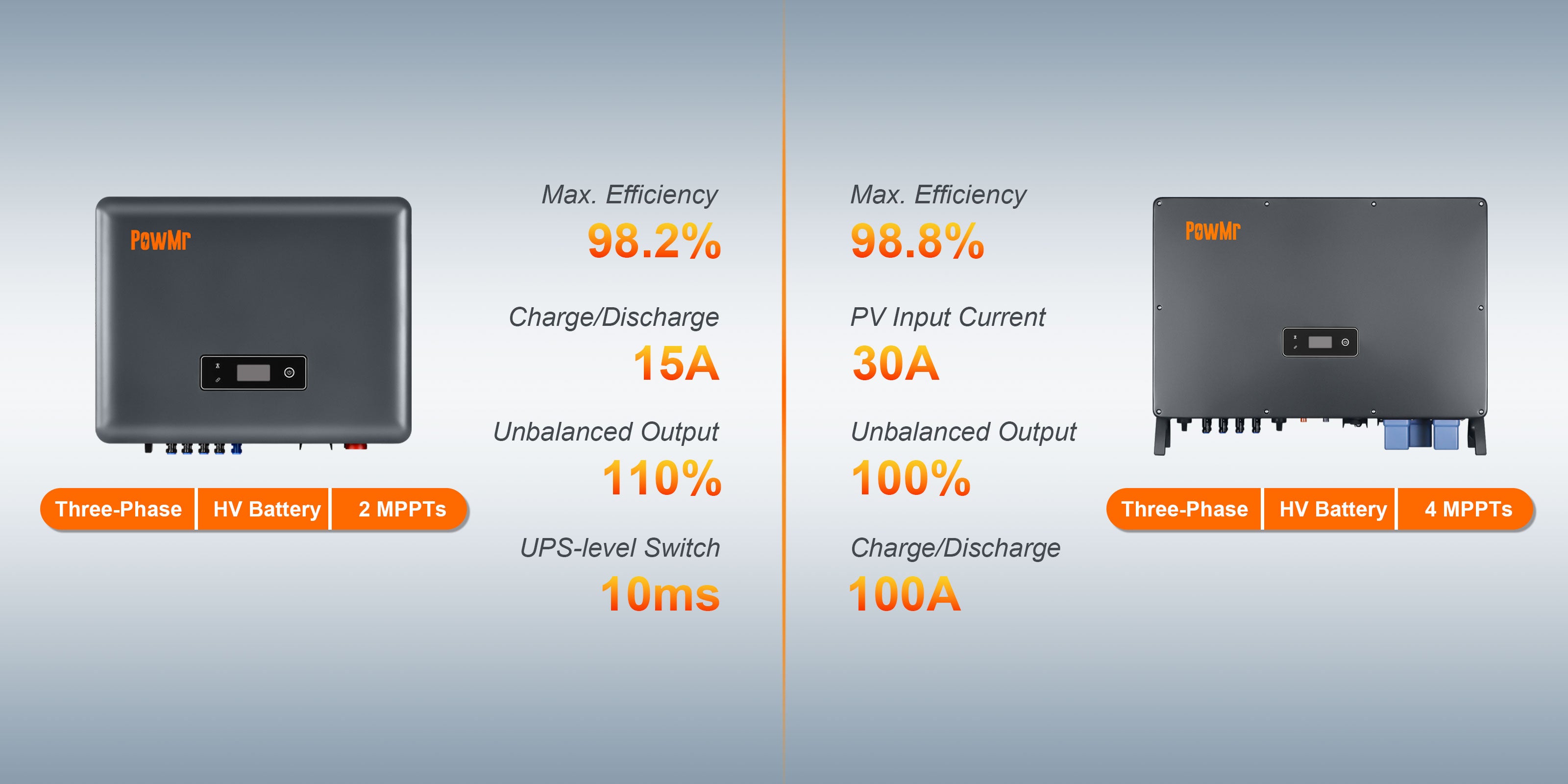
"100% หรือ 110% ของเอาต์พุตอินเวอร์เตอร์ที่ไม่สมดุลคืออะไร?"
การส่งออกที่ไม่สมดุล 100% หมายความว่าทุกเฟสของอินเวอร์เตอร์สามเฟสสามารถสร้างพลังงานได้ตั้งแต่ 0 ถึง 1/3 ของพลังงานที่ระบุ กล่าวอีกนัยหนึ่ง ความแปรปรวนในผลลัพธ์ระหว่างเฟสใด ๆ สองเฟสสามารถสูงถึง 1/3 ของพลังงานที่ระบุ.
ความทนทานต่อการส่งออกที่ไม่สมดุล 110% รองรับอัตราการโหลดที่ไม่สมดุล 110% ซึ่งหมายความว่ากำลังส่งออกของแต่ละเฟสในอินเวอร์เตอร์สามารถเข้าถึง 1.1 เท่า ของค่าที่ได้ จากการส่งออกที่ไม่สมดุล 100% (0 ถึง 11/30 ของกำลังที่ระบุ) ฟังก์ชันการส่งออกที่ไม่สมดุลช่วยเพิ่มความยืดหยุ่นและประสิทธิภาพโดยรวมของระบบพลังงานแสงอาทิตย์.
ประโยชน์ของการส่งออกที่ไม่สมดุล
หากคุณพบสถานการณ์เช่นข้อจำกัดในการส่งออกในบางประเทศหรือการชาร์จไฟฟ้าสามเฟสในสถานที่เฉพาะ SOLXPOW อินเวอร์เตอร์สามเฟสโดดเด่นเป็นตัวเลือกที่ดีที่สุดด้วยเหตุผลดังต่อไปนี้:
1. เพิ่มการใช้พลังงานในตัวเองให้สูงสุด
ในประเทศที่ จำกัดการส่งออก เอาต์พุตที่ไม่สมดุลของอินเวอร์เตอร์จะปรับพลังงานที่ส่งออกให้ตรงกับการใช้พลังงานของโหลดในแต่ละเฟส วิธีการนี้แตกต่างจากการส่งออกพลังงานที่จำกัดตามความต้องการของเฟสขั้นต่ำ ป้องกันการสูญเสียพลังงานแสงอาทิตย์อย่างมีนัยสำคัญ.
2. ลดค่าไฟฟ้าให้ต่ำที่สุด
ในสถานที่ที่มีการเรียกเก็บค่าไฟฟ้าแยกตามแต่ละเฟส,
อินเวอร์เตอร์จะกระจายพลังงานไปยังแต่ละเฟสอย่างอิสระ โดยไม่คำนึงถึงเฟสที่มีโหลดขั้นต่ำ มันจะเปลี่ยนไปใช้พลังงานจากกริดอย่างราบรื่นในสภาวะที่มีแสงอาทิตย์ไม่เพียงพอ เพื่อลดการพึ่งพาและให้ข้อได้เปรียบด้านต้นทุนที่สำคัญ พลังงานส่วนเกินจะถูกส่งกลับไปยังกริดเพื่อเพิ่มประสิทธิภาพโดยรวม.
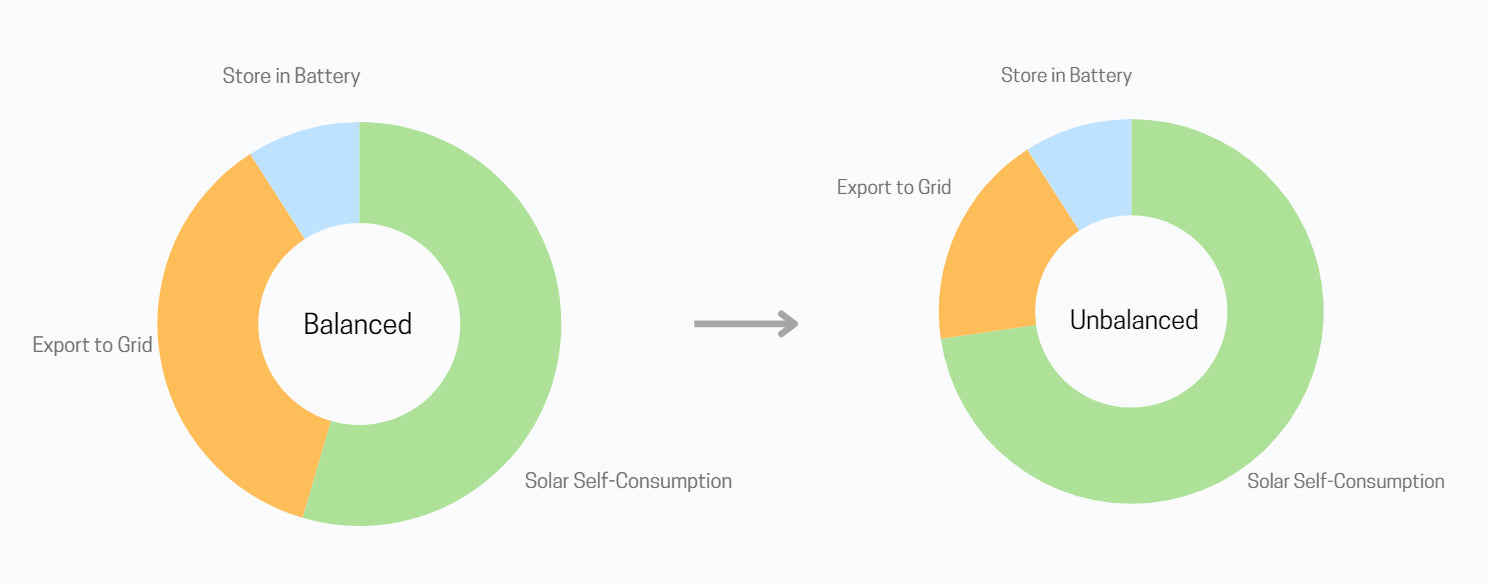
บทสรุป
นี่คือภาพรวมของแนวคิด สาเหตุ การคำนวณ และคำแนะนำในการบรรเทาภาระที่ไม่สมดุลในระบบพลังงานสามเฟส.
ในบล็อกโพสต์ที่จะถึงนี้ เราจะสำรวจโลกของระบบโฟโตโวลตาอิกสามเฟส โดย เปรียบเทียบอินเวอร์เตอร์ที่มีเอาต์พุตสมดุล 100% และเอาต์พุตที่ไม่สมดุล 100% เราจะเน้นข้อดีของ การใช้อินเวอร์เตอร์ที่มีเอาต์พุตไม่สมดุล 100% ในสถานการณ์ต่างๆ โดยชี้แจงถึงประสิทธิภาพที่เหนือกว่าในสภาวะที่แตกต่างกัน อย่าลืมสมัครรับจดหมายข่าวของเราเพื่อข้อมูลเชิงลึกเพิ่มเติม หรือ ติดต่อเรา สำหรับการสอบถามเกี่ยวกับผลิตภัณฑ์.

